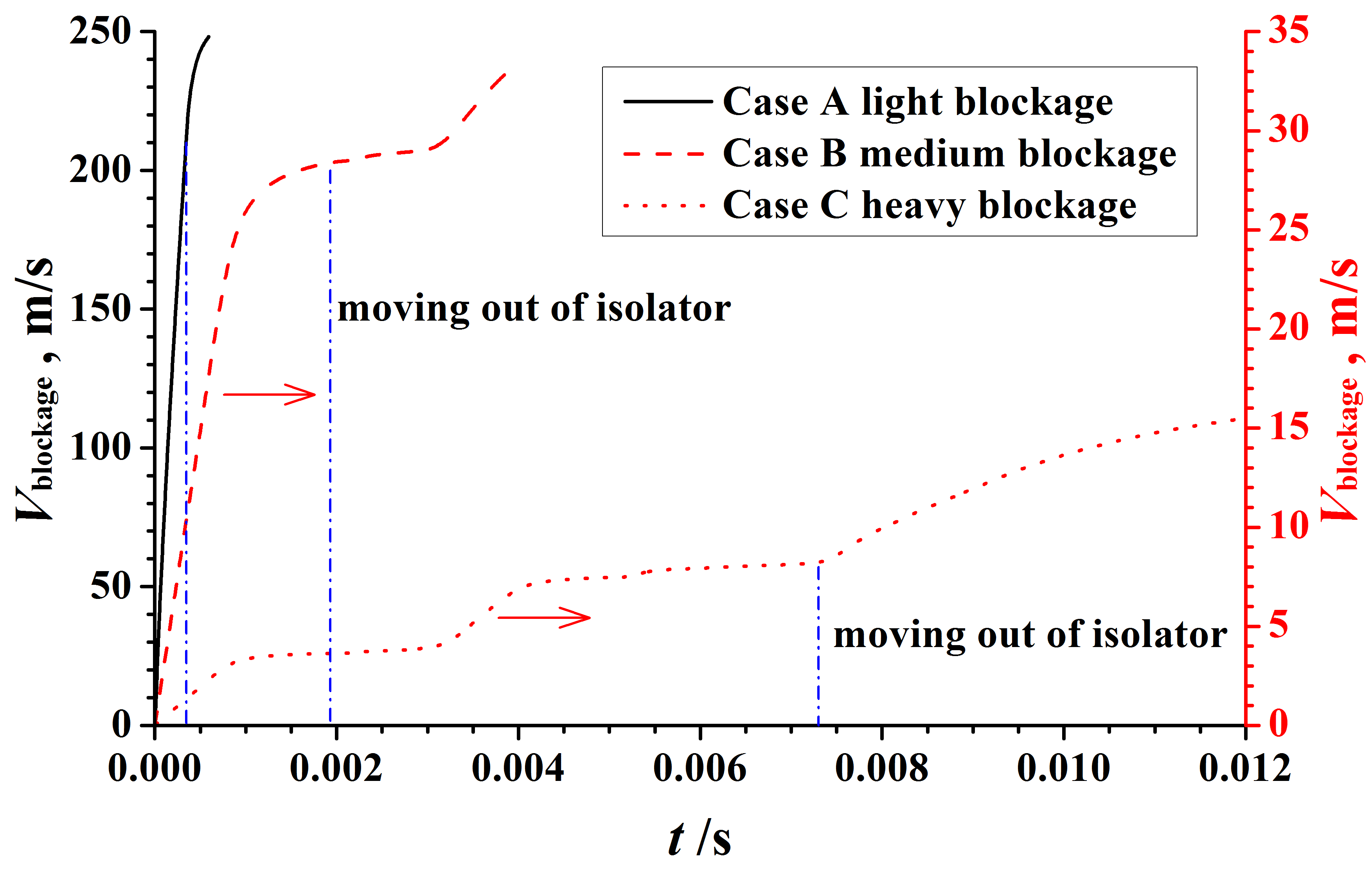The inlet starting-characteristic is an important factor that governs the performance of hypersonic airbreathing propulsion system (Van Wie et al. 1996). However, it is still a challenge to accurately predict the inlet starting-ability. The self-starting ability of an inlet could be confirmed in wind tunnels with sufficiently long running times. Re-start of such an inlet after a mechanically throttling induced unstart is proof of its self-starting ability at the test conditions (Smart, M. K. 2001). The authors have proposed a method to detect an inlet self-starting ability in a shock tunnel by pre-setting a blockage with a suitable weight in the inlet (Li et al. 2012). The blockage nearly closes the flow path to unstart the inlet at the initial running phase, and then it also can be blown out of the flow path to detect the ability of the inlet to re-start in the test flow durations in the shock tunnel. However, the entire flow features of such a testing process are not well understood due to the limited view scope in the experiments and the unsteady nature of the flows. To thoroughly study the details and to improve the method of detecting the ability of an inlet to self-start, Computational Fluid Dynamics is used in the present paper.
As shown in Fig. 1, a blockage is placed near the exit of a hypersonic inlet/isolator model. The motion of the blockage is simplified as a rigid body with one degree of freedom, and then two-dimensional numerical simulations are performed by applying dynamic mesh technique of layering. The computational domains are divided into two parts and combine with interfaces (see Fig. 2), the larger one is a stationary zone and the smaller one with the blockage is a dynamic mesh zone. The k-ω SST turbulence model is used for the complex flows, and the free stream conditions are Mach number Ma=5.9, total pressure P0=1.27MPa, total temperature T0=810K. The mass of the blockage is varied to study whether and how the blockage duration affects the self-starting ability testing result.

Fig.1 Schematic of the inlet model dimensions in millimeter

Fig.2 Computational domain
The aerodynamics of the blockage combine with the involved unsteady flow features in the inlet is discussed to better understand the physical mechanism of the testing process. Three types of flows in the testing process are obtained by varying the mass of the blockage. The velocity of the blockage decreases with the increasing mass as shown in Fig. 3. Although shock trains are formed in the isolator, the inlet maintains starting in the testing process and the blockage quickly moves out of the isolator when the blockage is very light (Case A). The inlet is imposed to unstart when the mass of the blockage is medium (Case B). Once the inlet is unstarting, the velocity of the blockage increases slowly as a result of mass flow spillage over the inlet cowl. The inlet restarts quickly when the blockage is blown out of the isolator. When a heavy blockage is adopted (Case C), the blockage duration is long. Shock wave oscillations are presented in the Case C and the velocity of the blockage increases in a stepwise manner with the varying of the mass flow of the inlet. The inlet also restarts when the heavy blockage is blown out. Moreover, a uniformly accelerating model is proposed to pre-estimate the motion of the blockage, and it agrees reasonably well with the simulations. The results indicate that the blockage duration does not affect the inlet self-starting ability and the inlet can re-start when the pre-setting blockage is blown out. However, very heavy blockage is not suitable for self-starting ability test in shock tunnels because of the insufficient flow duration. The present study is helpful for us to extend the pre-setting-blockage method to detect an inlet self-starting ability.

Fig.3 Velocity of the blockage
Acknowledgments
This work was supported by the National Natural Science Foundation of China (Grant No. 11402263), and China Postdoctoral Science Foundation (Grant No. 2014M551818), the Fundamental Research Funds for the Central Universities.
References
Van Wie DM, Kwok FT, et al. (1996) Starting characteristics of supersonic inlets. AIAA Paper 1996-2914
K. Smart. (2001) Experimental testing of a hypersonic inlet with rectangular-to-elliptical shape transition [J]. Journal of Propulsion and Power Vol. 17, No. 2: 276-283.
Li Z., Huang B., Yang J., et al. (2012) Starting characteristics of hypersonic inlets in shock tunnel. In: Kontis K. (Ed.), 28th International Symposium on Shock Waves, Vol. 2:1015-1020, Springer Press

